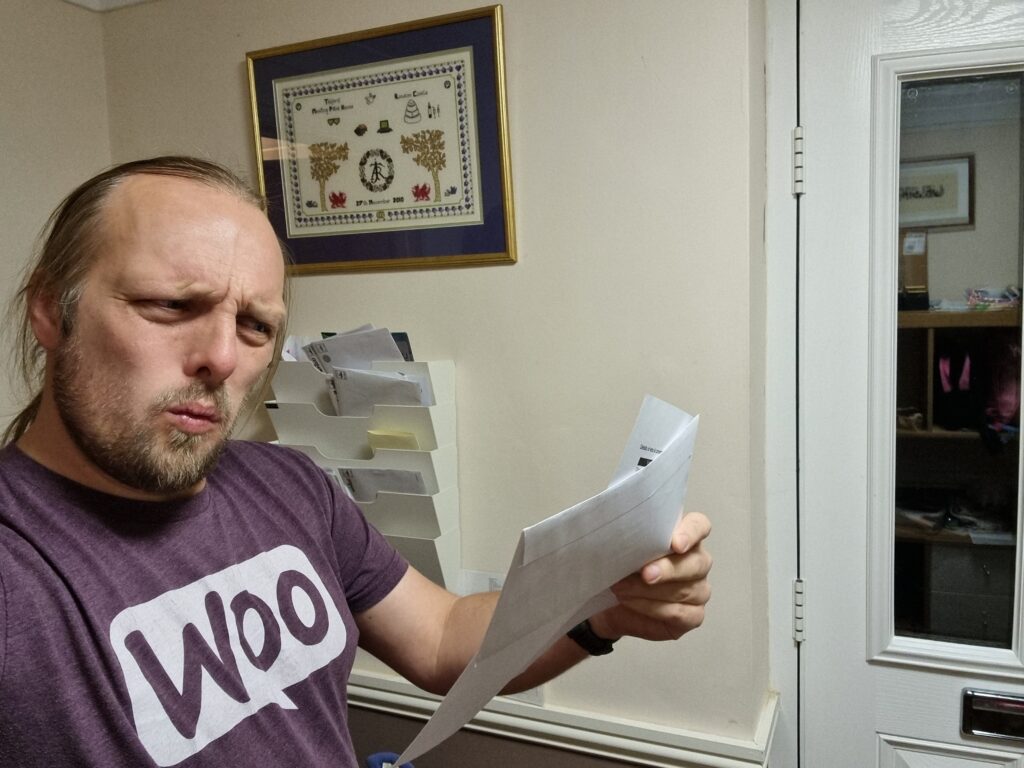In case you weren’t already a little nervous or uneasy going in to the dental clinic, the doorstop at my dentist’s front door will fix that for you.
Tag: creepy
Email Tracking and Paperless Banking
A few weeks ago, my credit card provider wrote to me to tell me that they were switching me back from paperless to postal billing because I’d “not been receiving their emails”.
This came as a surprise to me because I have been receiving their emails. Why would they think that I hadn’t?

Turns out they have a tracking pixel in their email to track that it’s been opened, as well as potentially additional data such as when it was opened (or re-opened), what email client or clients the recipient uses, what IP address or addresses they read their mail from, and so on.
Naturally, because I don’t like creepy companies tracking what I do on my own computers and try to minimise how much they can do so, I read most of my mail with remote content disabled:

Jeremy just had something to say on this topic, too, based on his recent reading of Design for Safety by Eva PenzeyMoog:
Do you have numbers on how many people opened a particular newsletter? Do you have numbers on how many people clicked a particular link?
You can call it data, or stats, or analytics, but make no mistake, that’s tracking.
Follow-on question: do you honestly think that everyone who opens a newsletter or clicks on a link in a newsletter has given their informed constent to be tracked by you?
Needless to say, I had words with my credit card provider. Paperless billing is useful to almost everybody but it’s incredibly useful for blind and partially-sighted users (who are also the ones least-likely to have images loading in the first place, for obvious reasons) because your computer can read your communication to you which is much more-convenient than a letter. Imagine how annoyed you’d be if your bank wrote you a letter (which you couldn’t read but had to get somebody else to read to you) to tell you that because you don’t look at the images in their emails they’re not going to send them to you any more?
Even if you can somehow justify using tracking technologies (which don’t work reliably) to make general, statistical decisions (“fewer people open our emails when the subject contains the word ‘overdraft’!”), you can’t make individual decisions based on them. That’s just wrong.
A New Way to Be Creepy on Facebook
This week, I discovered Breakup Notifier, a whole new way to be creepy on Facebook. I mention it because I just know that there are some of you out there who were waiting for this tool to be invented (and we’ll know who you are because you’ll be the ones to try to keep a low profile by not commenting to say “ugh; that’s creepy”).

The idea is, as it says on the site, that you can tell Breakup Notifier which of your friends you’d be interested in, if only it weren’t for the fact that they’re in a (presumably closed) relationship. If their relationship status changes, you get an email to let you know, so you can be the first to take advantage of the new situation. Like Ted in The Window, an episode of How I Met Your Mother: which if you’ve not seen yet, you should try.
I think that the developers of this site are missing an opportunity, though, to make a little cash on the side. All you have to do is to be able to buy “priority access” on the people you’re interested in. If you’ve paid, then you get notice of a breakup in advance of other people who are interested in the same person but who haven’t paid. The amount of advance notice is based on the difference in your bids: so if I’m stalking watching Alice, and so are Bob and Charlie, but I paid £10 and Bob paid £2, then maybe I’ll get a notification 8 hours before Bob, who get a notification 2 hours before Charlie. It’s all relative, so if I’m also interested in Eddie, who’s also being followed by Frankie and Graeme, but we’re all on the free package, then we all get notified together.
As far as marketing’s concerned, that’s easy: just tell users how many others are watching the people they’re interested in! I suspect that more money would be made if you don’t tell them how much the others have paid, but the whole thing’s as sociologically-complicated as it is skin-crawling. What happened to the good old days, when you’d just keep pressing refresh on your crush’s MySpace page until they hinted that things might be rocky with their significant other?
